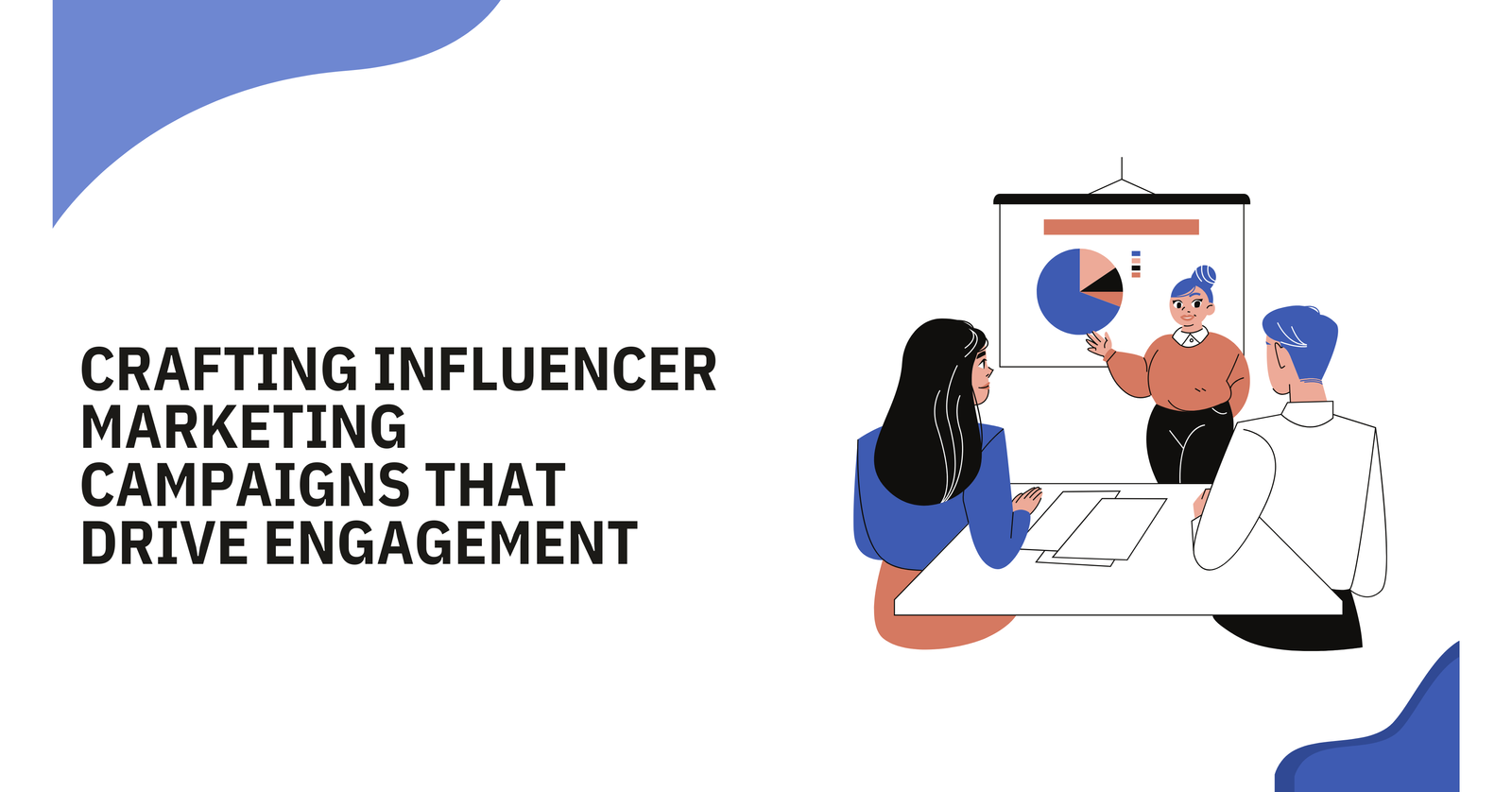
Influencer marketing has emerged as one of the most effective strategies for reaching customers in the current digital era. Creating engagement-boosting influencer marketing initiatives is crucial for building strong client relationships and boosting brand awareness, regardless of the size of your company. Let’s examine in detail the tactics that enable you to develop effective influencer marketing initiatives.
Table of Contents
- 1 Table of Contents
- 1.1 Introduction to Influencer Marketing
- 1.2 Understanding Your Target Audience
- 1.3 Selecting the Right Influencers
- 1.4 Defining Campaign Goals and Objectives
- 1.5 Developing a Creative Campaign Strategy
- 1.6 Platforms and Tools for Influencer Marketing
- 1.7 Managing Your Influencer Relationships
- 1.8 Measuring Success and Adjusting Campaigns
- 1.9 Conclusion: Driving Engagement with the Right Strategy
- 1.10 Frequently Asked Questions
Table of Contents
Introduction to Influencer Marketing
What is Influencer Marketing?
One form of social media marketing is influencer marketing, which entails partnerships between companies and influencers—people who have amassed a devoted and active fan base. In contrast to typical ads, these influencers use their platform to market a brand’s goods and services by using message that is more personal and genuine.
Why Influencer Marketing is Essential for Brands Today
Recommendations from individuals they respect and follow are trusted by consumers. Because of this, influencer marketing is a powerful tool for fostering engagement, raising brand exposure, and fostering trust. With over 4 billion people using social media globally, influencer marketing gives firms a direct line of communication with their target market.
Understanding Your Target Audience
Identifying Your Audience’s Interests and Behaviors
Knowing who your target audience is is essential before starting an influencer marketing campaign. What needs, interests, and problems do they have? This knowledge enables you to develop material that appeals to your audience and match your campaign with their values.
Importance of Demographics in Influencer Marketing
Knowing your target audience’s age, gender, geography, and financial level will assist you customize your campaign. Working with an influencer that has followers that are similar to your target audience will increase engagement if your product is aimed at young professionals.
Case Study: A Brand That Knew Its Audience
Consider the beauty company Glossier, which created its success by targeting Gen Z and millennial customers. In order to produce content that spoke directly to their target audience, they collaborated with micro-influencers who had a tiny but active following.
Selecting the Right Influencers
Micro vs. Macro Influencers: What’s the Difference?
Micro-influencers often have between 10,000 and 100,000 followers, but their engagement rates are typically greater. On the other side, macro-influencers are perfect for mass brand recognition because of their enormous followings (100K+). Your campaign’s objectives will determine whether you choose a micro or large approach.
How to Evaluate Influencers’ Engagement Rates
Influence is not always correlated with the quantity of followers. One important measure of an influencer’s capacity to motivate action is their engagement rate, or the proportion of followers who engage with their content. Seek out influencers who have at least a 3% engagement rate.
The Role of Authenticity in Influencer Marketing
Authenticity is crucial in a busy digital environment. Customers are able to distinguish between influencers who are merely attempting to sell a product and those who actually adore it. For the most genuine outcomes, collaborate with influencers who share the same values as your brand.

Defining Campaign Goals and Objectives
Setting Clear and Measurable KPIs
Every effective influencer marketing effort begins with well-defined goals. Are you trying to grow sales, improve social media engagement, or enhance website traffic? Establish SMART (specific, measurable, achievable, relevant, and time-bound) key performance indicators (KPIs).
Aligning Campaign Goals with Business Objectives
Your campaign’s objectives ought to align with your overarching business goals. For instance, your influencer campaign may concentrate on lead generation if your company’s objective is to increase the number of customers.
Examples of Effective Campaign Goals
Typical objectives for influencer marketing campaigns include:
Increasing recognition of the brand
Increasing interaction with comments, shares, and likes
Using unique influencer discount codes to boost product sales
Developing a Creative Campaign Strategy
Content Ideas That Drive Engagement
Tutorials, unboxings, behind-the-scenes glimpses, and even freebies are all examples of engaging material. Work together with influencers to generate original concepts that promote audience engagement while showcasing your product.
The Importance of Collaboration with Influencers
Audiences are best understood by influencers. Allow them to use their imagination to create material that appeals to their audience. More natural and sincere engagement results from this strategy.
Case Study: A Highly Engaging Influencer Campaign
Influencers were given free merchandise and a discount coupon to distribute when Daniel Wellington watches were first released. Because of the campaign’s simplicity, influencers were able to produce genuine, captivating content, which greatly raised sales and brand recognition.
Platforms and Tools for Influencer Marketing
Choosing the Right Social Media Platform
Every social media network has advantages. TikTok is ideal for brief, viral videos, YouTube for lengthy video material, and Instagram for visual storytelling. Select a platform based on the preferences of your audience.
Tools to Track and Measure Success
To monitor engagement metrics like clicks, shares, and conversions, use programs like Hootsuite, Sprout Social, and Google Analytics. You can use these information to improve your campaign in real time.
Managing Your Influencer Relationships
Building Long-Term Partnerships with Influencers
One-time posts aren’t the only aspect of influencer marketing. Establishing enduring connections with influencers results in more consistent and genuine brand portrayal.
Ensuring Clear Communication Throughout the Campaign
Effective communication is crucial from the first outreach to the campaign’s implementation. Ensure that influencers are aware of your objectives, deadlines, and content standards.
How to Handle Challenges During a Campaign
Campaigns don’t always go as expected. Be ready to change and deal with problems quickly and professionally, whether they are caused by low involvement or unfavorable comments.

Measuring Success and Adjusting Campaigns
Analyzing Engagement Metrics
Keep a careful eye on KPIs like engagement rate, click-through rate (CTR), and conversion rate when your campaign goes live. These metrics show whether the audience is responding favorably to your campaign.
Making Data-Driven Adjustments
If your involvement isn’t meeting your expectations, don’t be afraid to adjust your approach. To get the best results, change the kinds of material you share, the times you post, or even the influencers you collaborate with.
Also Reads: The Role of Emotional Connection in a Successful Branding Strategy
Top Influencer Marketing Strategies to Boost Your Business in 2024
The Ultimate Guide to Influencer Marketing for Small Businesses
Innovative Influencer Marketing Trends to Watch This Year
The Benefits of Influencer Marketing for E-Commerce Brands
Conclusion: Driving Engagement with the Right Strategy
In conclusion, meticulous planning, the correct alliances, and a thorough grasp of your audience are necessary for creating influencer marketing campaigns that increase engagement. You can develop campaigns that connect with your target audience and encourage enduring brand loyalty by establishing specific objectives, selecting genuine influencers, and consistently refining your efforts.
Frequently Asked Questions
Q: How do I choose the right influencer for my brand?
A: Look for influencers who align with your brand values, have an engaged audience, and can authentically promote your product or service.
Q: What budget should I allocate for an influencer marketing campaign?
A: It varies depending on the size of the influencer and the platform. Micro-influencers may charge less, while macro-influencers with large followings can be more expensive.
Q: How can I track the success of my influencer campaign?
A: Track success using engagement metrics such as likes, shares, and comments. Tools like Google Analytics and social media insights also help measure traffic and conversions.
Q: How do I ensure influencers stay authentic?
A: Work with influencers who genuinely align with your brand and allow them creative freedom. This approach results in more authentic content.
Q: Is influencer marketing effective for small businesses?
A: Absolutely! Micro-influencers, in particular, can offer great engagement at a more affordable price, making it a great option for small businesses.
Add a Comment